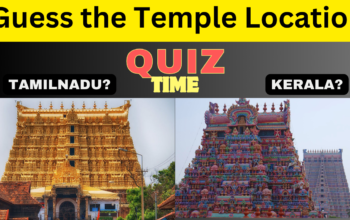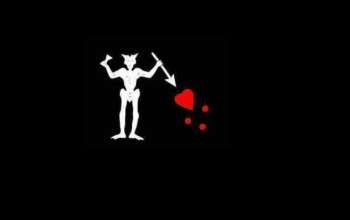Some points related with Banking in India
First bank in India – The General Bank of India in 1786
Second bank in India – The Bank of Hindusthan
Bank of Calcutta was started in Calcutta in 1806 which is now the SBI.
First Fully owned Indian Bank – Allahabad Bank started in 1865
Other private banks in India at that time – Punjab National Bank (in Lahore in 1895) and the Bank of India (in Mumbai in 1906)
Banking structure in India
RBI -Scheduled Banks – Commercial Banks and Co operatives Banks
Commercial banks – Private(34), Public (19) , Foreign(45), Regional Rural (196)
Co operative banks – Urban Coop(52) , State Co Op (16)
Reserve Bank of India –
- This is the central bank in India started in 1935 in Mumbai
- As per the Reserver Bank of India Act 1934
- Upon the recommendations of Hillton Young Committee in 1926.
- RBI is nationalised in 1949 till when it is a privately owned bank.
- Now RBI is completely autonomous body and has the least pressure from the Government.
- It has 22 regional offices in India
- Has a 13 member board of Directors with the Governor of RBI (YV Reddy) as its head.
Previous Governors of RBI – Bimal Jalan, C Rangarajan, Venkitaramanan, RN Malhotra, A Ghosh, Dr Manmohan Singh.
On 1 July,2006 in an attempt to enhance the quality of customer service and strengthen the grievance redressal mechanism, the Reserve Bank of India constituted a new department — Customer Service Department (CSD).
Objectives of RBI –
- More Control of Credit Delivery
- Issue Currency
- Foreign Exchange Management (through the Foreign Ex Mgmt Act 1999)
- Credit Flow
- Monetory Policy (Framing, Implementing (tightening!) and monitoring)
- Price Stability (Controlling Inflation)
- Development Role
- Regulation of Financial Systems
- Banker to the Government
- Banker to the Banks
The Tarapore committee is a 5 member committee setup by the Reserve Bank of India under the chairmanship of former RBI deputy governor SS Tarapore to “lay the roadmap” to Fuller Capital Account Convertibility.
- UTI Bank – the first Tech Savvy bank after the 1990 Liberisation reforms.
- July 19 1969 – Indira Gandhi Govt nationalised 14 banks
- 1980 – 6 more banks were nationalised and one bank New Bank of India is merged with the Punjab National Bank to make the total National Banks in which the government has a stake to 19.
SBI and its sister banks – SBI, SB of Hyderabad, SB Travancore, SB Indore, SB Mysore, SB Bikaner and Jaipur, SB of Saurashtra, SB Patiala.
19 National Banks – Allahabad Bank, Andhra Bank, Bank of India, Pubjab National Bank, Dena Bank, Vijaya Bank, Oriental Bank of Commerce, Indian overseas Bank, Union Bank of India, UCO, Corporation Bank, Canara Bank, Central Bank of India, Bank of Baroda, Indian Bank, Punjab and Sindh Bank, Syndicate Bank , United Bank of India, Bank of Maharashtra
SBI –
- Bank of Calcutta in 1806
- Bank of Bengal in 1809
- Bank of Bombay(1840) and Bank of Madras(1843) merged in to the Bank of Bengal in 1921 and renamed as Imperial Bank of India
- It is a joint stock company as a result of the Royal Charters at that time
- Currency printing was under this bank until the establishment of a central bank in India by the Paper Currency Act 1861
- Largest bank in India
- Largest bank in the world in terms of branches and employees
- Oldest commercial bank in the Indian Sub continent
- Nationalised in 1955 with the name SBI with the Govt of India Act – State Bank of India Act 1955 and other allied banks are added to it in 1959 (State Bank of India Subsidiary banks Act 1959)- the first banks to be nationalised.
- Bank of Cochin merged into SBI in 1980 after a financial crisis.
- 60% stake in SBI is of RBI at present and reforms are going on to get 100 % stake totally to the Govt.
- Asset base of US $ 126 and Reveneue of US $ 13.77
- Also a part of the London Stock Exchange apart from the BSE and the NSE
- 498th position in the fortune 500 companies and the first from India to achieve this and the only Indian bank to do so.
- Largest Overseas operations by an Indian Bank
- Largest number of ATMs
- the concept of Core Banking System CBS was initialted and the gaurantor to the Indian Govt.
- Harshad mehta scam in 1992 effected its operations.
Other Banking news in the country
- IDBI acquired United Western Bank
- Smallest Commercial Bank in India at present – Ganesh Bank of Kurundwad
- Bank of India is the only Indian Bank to start a branch in China
Stake of Govt in PSB with more than 50% stake:
- OBC – 51%
DENA – 51.19%
Andhra – 51.55
Bank of Baroda – 53.4
Vijaya Bank – 53.87
Allahabad – 55.23
Union Bank – 55.43
Corporation bank – 57.17
PNB – 57.79
IOB – 61.24
Canara – 73.17
UCO – 74.98
Central bank of India – 100
Indian bank – 100
Related Posts
Love playing Tennis. Love Movies










